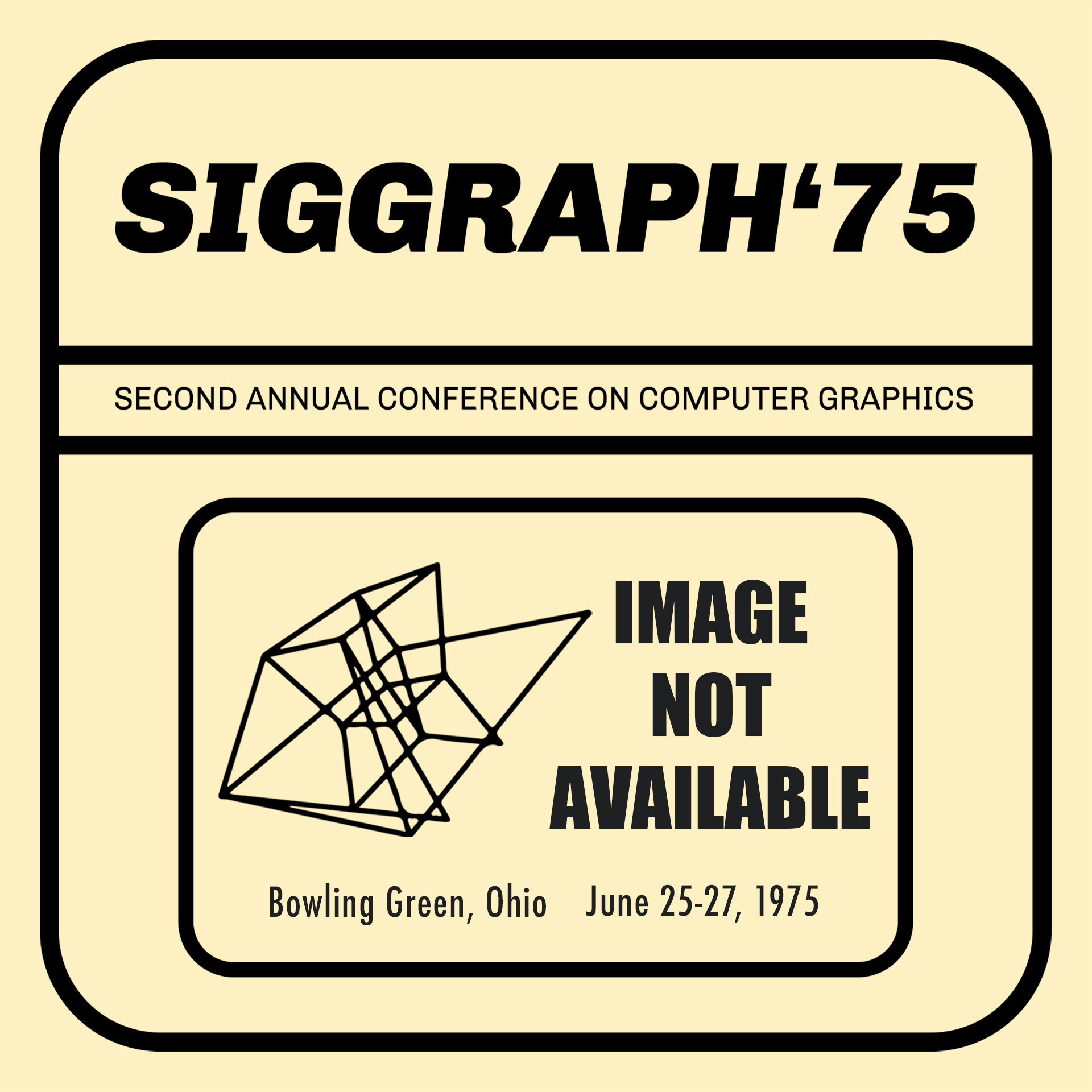“Computer Animation of Free Form Images” by Burtnyk and Wein
Conference:
Type(s):
Title:
- Computer Animation of Free Form Images
Session/Category Title: Current State of the Art in Computer Animation
Presenter(s)/Author(s):
Moderator(s):
Abstract:
Our main interest, at the National Research Council of Canada, has been the development of a system for the professional animator in the traditional film industry. The primary form has been animation with free form drawn images.
More recently we have been investigating the extension of our system towards the animation of graphs and charts where the dynamics in the image are derived from time series data. The data are in turn the output from a computer based model.
For the most part this paper is discussing the first area of animation defined above; the problems that are posed by the requirements and some of the solutions.
Because we are dealing mainly with free-form drawn images, we have confined ourselves to two dimensional drawings, prepared on a graphic tablet. Working through the graphic tablet the artist uses his well developed skills in preparing the picture material. The tablet is therefore an important component in the system.
The animation approach that we have taken is based on the concept of key frame animation in which the artist provides key images in a sequence and the program computes by interpolation the in-between frames.
Key frame animation techniques offer two advantages in the type of animation that we have been investigating. First, the technique mimics conventional animation, in which the key positions are established in a storyboard, and therefore it is a good point of departure for traditionally trained animators. Secondly, inherent in this technique is the ability to animate distortion or change of shape. The success of this technique depends on the extent to which the animator is able to control the interpolation process. In our system he does this by establishing the key positions and by deciding on the order in which he traces the lines in the key image. The one-to-one correspondence between the source and the destination key is between stroke lines in the image. The process has been described previously (1).
It is straightforward to provide a wide range dynamics in time by controlling the rate at which interpolation is performed. Thus the artist has athis disposal means for producing a wide range of motion dynamics and motion tapers. However, interpolation in space is linear. Each in-between frame is determined uniquely by the source key, the destination key, and the time dynamics.
References:
1. Burtnyk, N. and M. Wein, Computer Generated Key-Frame Animation, J. SMPTE, V. 80(3), March 1971, pp. 149-153.
2. Burtnyk, N. and M. Wein, Towards a Computer Animating Production Tool, Proc. Eurocomp Congress, May 1974, Pub: Online Ltd., Brunel, England, pp. 174-185.





